
|
Olympus Camedia E-20 Image Samples |

| My other articles related to the Olympus E-10 and E-20 cameras |
|
Sunny day conditions These are sample images from a production run Olympus Camedia E-20; just enough to provide a quick-glance evaluation of the lens and imaging circuitry. The pictures at the left are reduced full-frame images, resharpened as needed and showing the locations of the samples, which are shown at the right. The latter are just cropped and re-saved at low compression, without any further manipulation. This way they are representative for the original image quality of the camera/lens combination. The samples show detail larger than it will be printed. For 8x10" prints, the sample height will correspond to exactly 1 inch (25 mm) on paper, while for 11x14" ones — to 1.37" (35 mm). | ||
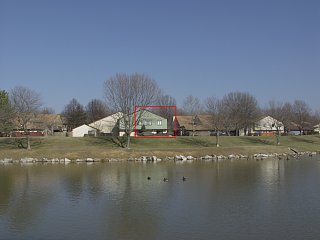
|
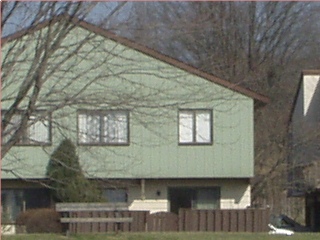
| |
| EFL = 35mm, program mode with -0.3EV exposure compensation (1/640s, F/6.3), compression 1:4. Contrast set to "Low", sharpness to "Soft". | ||
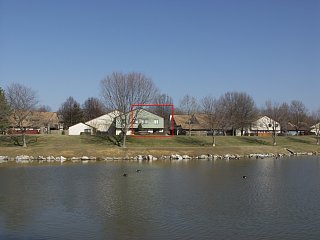
|
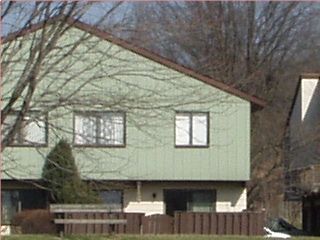
| |
| Same as above, but contrast and sharpness at "Normal". | ||
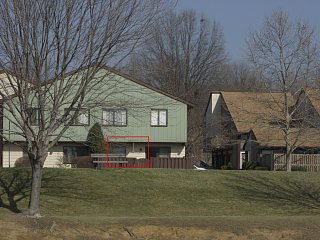
|
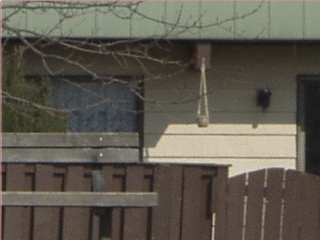
| |
| EFL = 140mm, program mode with -0.3EV exposure compensation (1/640s, F/6.3), compression 1:4. Contrast set to "Low", sharpness to "Soft". | ||
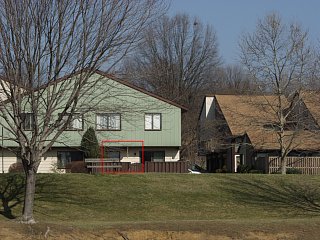
|
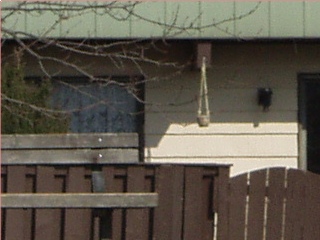
| |
| Same as above, but contrast and sharpness at "Normal". | ||
|
My initial impression is very positive here. Clearly, the lens is capable of servicing the higher pixel resolution. The samples look at least as sharp as those taken with an Olympus E-10, or maybe even sharper (is it possible that Olympus tweaked the in-camera processing software?), when viewed in the same pixel size. This means that enlargements to the same print size will be at least 14% sharper. In case you've missed it, let me reprint here a remark on in-camera image processing from the E-10 sample image page: Comparisons between various cameras (...) require some caution. It is difficult to compare without knowing how much in-camera processing has been applied to images. The pictures more heavily adjusted may look better in comparison (see the last sample), but will not gracefully submit to as much postprocessing afterwards. Now, let us have a look at a comparison between the E-10 and E-20; pictures shot within a minute or so from each other, under identical conditions and with identical settings. Here is the first sample from this page, side by side with the first one from the E-10 sample page. | ||
| E-10 | E-20 | |
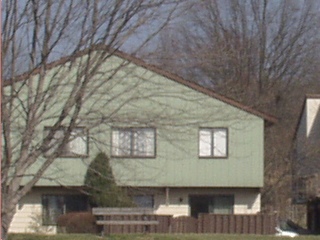
|

| |
| EFL = 35mm, program mode with -0.3EV exposure compensation (1/640s, F/6.3), compression 1:4. Contrast set to "Low", sharpness to "Soft". | ||
|
Overall, an impressive performance. Getting a presentable 12x16" (30x40 cm) print from the E-20 should be relatively easy, even without any sharpness enhancement whether in-camera or afterwards. (Note that both pictures were framed identically; the difference in sample scale is due entirely to the higher pixel count on the E-20. It also seems that the image-processing algorithms may have been tweaked in the newer model.) Long exposures Here is a picture showing the quality of long exposures of the E-20. It was taken in diffused daylight from a window. A tripod was used, of course. The noise reduction feature was not activated (actually, I'm not very hot about it, but this is a subject for a separate article to come). The specks visible in the sample are not hot pixels, just dust. Hot pixels show at longer exposures (eight seconds or so) and they are usually green or red. | ||
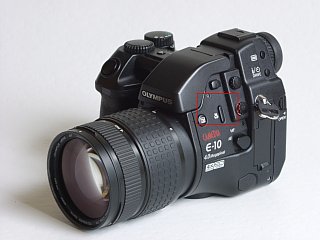
|
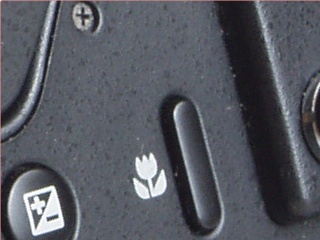
| |
| EFL=140mm, ISO 80, 1s at F/8 in aperture priority mode (no exposure compensation); compression 1:8, contrast/sharpness at "Normal". Tripod, diffused daylight. | ||
|
All pictures above were taken in the interlaced scan mode (which is the "normal" working regimen of the E-20). Now let's have a look at the image quality loss in the progressive scan mode (allowing for shorter exposure times). | ||
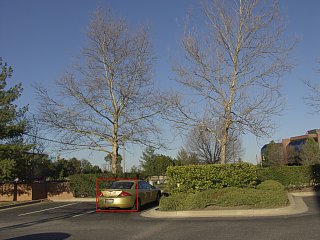
|
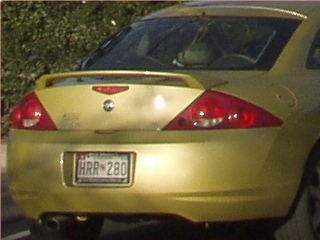
| |
| Automatic exposure (1/640s, F/4.0), compression 1:4, contrast set to normal, sharpness to soft. Interlaced scan mode (default). | ||
|
Shown above is a reference image, taken in the "normal", interlaced mode. A sample from another one, this time in the progressive mode, is at the right.
The image is much less sharp (see the license plate), and diagonals show ugly "jaggies" due to loss of every other scan line of the CCD. The picture looks acceptable only when reduced from the full resolution (2560x1920) to XGA (1024x768). | 
Same as above, but in the progressive scan mode. | |
|
In my feeling, progressive scan pictures will be acceptable when printed in the 4x6" (10x15 cm) size, just so-so at 5x7" (13x18 cm), and will stink to heavens if printed any larger. This effectively makes the E-20, when used in the progressive scan mode, more or less equivalent to a 1-megapixel camera. More samples... Here are two pictures from a trip to Poland. | ||
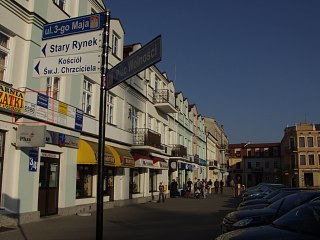
|
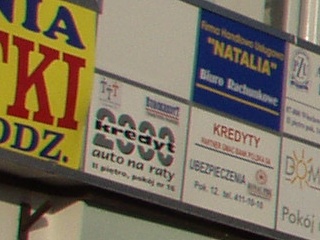
| |
| EFL=35mm, ISO 80, 1/640s at F/6.3 in program mode (-0.7EV exposure compensation to make sure that highlight detail is preserved); compression 1:8, contrast/sharpness at "Normal". | ||
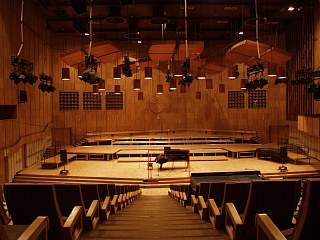
|
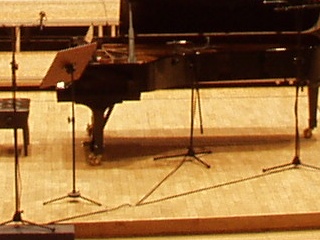
| |
| EFL=35mm, ISO 80, 1/3s at F/4 in aperture priority mode (-1EV exposure compensation); compression 1:8, contrast/sharpness at "Normal", auto color balance, light tripod. | ||
|
See also my E-10 image samples. | ||

| My other articles related to the Olympus E-10 and E-20 cameras |
|
Camedia® and Olympus® are registered trademarks of Olympus Corporation.
This page is not sponsored or endorsed by Olympus (or anyone else) and presents solely the views of the author. |
| Home: wrotniak.net | Search this site | Change font size |
| Posted 2002/02/09; last updated 2004/06/18 | Copyright © 2000-2004 by J. Andrzej Wrotniak |